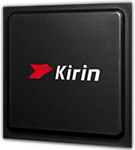
Intel Celeron N2810 Benchmark, test e specifiche
Ultimo aggiornamento:
Intel Celeron N2810 è un core processor 2. Può gestire 2 thread contemporaneamente ed è stato introdotto il Q4/2013. Si basa sul 6. Gen della serie Intel Celeron e richiede una scheda madre con il socket BGA 1170. Intel Celeron N2810 ottiene 189 punti con un core CPU nel benchmark Geekbench 5. Quando si utilizzano tutti i core della CPU, il risultato è 318 punti.

| Cognome: | Intel Celeron N2810 |
|---|---|
| Famiglia: | Intel Celeron (165) |
| Gruppo CPU: | Intel Celeron J1000/N2000 (17) |
| Architettura : | Bay Trail |
| Segmento: | Mobile |
| Generazione: | 6 |
| Predecessore: | -- |
| Successore: | -- |
CPU Cores e frequenza di base
I 2 core della CPU del Intel Celeron N2810 clock con 2,00 GHz. Il numero di core della CPU e la frequenza di clock del processore sono in gran parte responsabili delle prestazioni complessive.
| CPU Cores / Threads: | 2 / 2 |
|---|---|
| Architettura principale: | normal |
| Cores: | 2x |
| Hyperthreading / SMT: | No |
|---|---|
| Overclocking: | No |
| Frequenza: | 2,00 GHz |
| Turbo Frequenza (1 Core ): | -- |
| Turbo Frequenza (2 Cores): | -- |
Grafica interna
Con Intel HD Graphics (Bay Trail GT1), Intel Celeron N2810 ha una grafica integrata. Questo ha 4 processori SM, che hanno un totale di 32 texture shader. L'iGPU non solo abilita i giochi, ma accelera anche in modo significativo la riproduzione di video, ad esempio.
| nome GPU: | Intel HD Graphics (Bay Trail GT1) |
|---|---|
| Frequenza GPU : | 0,31 GHz |
| GPU (Turbo ): | 0,76 GHz |
| Unità di esecuzione: | 4 |
| Shader: | 32 |
| Hardware Raytracing: | No |
| Data di lancio : | Q3/2013 |
| Max. visualizzazioni: | 2 |
|---|---|
| Generation: | 7 |
| Direct X: | 11.2 |
| Tecnologia : | 22 nm |
| Max. GPU Memoria: | 2 GB |
| Frame Generation: | No |
Hardware codec support
I processori con grafica integrata possono elaborare e riprodurre video in modo più rapido ed efficiente. Ciò può avere un effetto positivo sulla durata della batteria dei notebook, ad esempio.
| h265 / HEVC (8 bit): | No |
|---|---|
| h265 / HEVC (10 bit): | No |
| h264: | Decodificare / Codificare |
| VP8: | No |
| VP9: | No |
| AV1: | No |
|---|---|
| AVC: | Decodificare / Codificare |
| VC-1: | Decodificare |
| JPEG: | Decodificare |
Memoria & PCIeIntel Celeron N2810 supporta fino a 8 GB memoria in un massimo di 2 (Dual Channel) canali di memoria. Ciò si traduce in una larghezza di banda di memoria massima di 17,1 GB/s. |
|
| Tipo di memoria : | Banda di memoria: |
|---|---|
| DDR3-1066 | 17,1 GB/s |
| Max. Memoria: | 8 GB |
| Canali di memoria : | 2 (Dual Channel) |
| ECC: | No |
| PCIe: | 2.0 x 4 |
| PCIe Larghezza di banda: | 2,0 GB/s |
Gestione termicaCon il TDP, il produttore del processore specifica la soluzione di raffreddamento necessaria per il processore. Intel Celeron N2810 ha un TDP di 7.5 W. |
|
|---|---|
| TDP (PL1 / PBP): | 7.5 W |
| TDP (PL2): | -- |
| TDP up: | -- |
| TDP down: | 4.5 W |
| Tjunction max.: | 100 °C |
Dettagli tecnici
Intel Celeron N2810 ha una cache grande 1,00 MB. Il processore è prodotto in %%Manufacturing%%. La produzione moderna aumenta l'efficienza del processore.
| Tecnologia : | 22 nm |
|---|---|
| Design a chip: | Monolitico |
| Presa: | BGA 1170 |
| L2-Cache: | -- |
| L3-Cache: | 1,00 MB |
| AES-NI: | No |
| Sistemi operativi: | Windows 10, Linux |
| Virtualizzazione: | VT-x, VT-x EPT |
|---|---|
| Set di istruzioni (ISA): | x86-64 (64 bit) |
| Estensioni ISA: | SSE4.1, SSE4.2 |
| Data di lancio : | Q4/2013 |
| Prezzo di rilascio: | -- |
| Numero di parte: | -- |
| Documenti: | Scheda tecnica |
Valuta questo processore
Risultati di benchmark

I risultati del benchmark per Intel Celeron N2810 sono stati attentamente controllati da noi. Pubblichiamo solo risultati di benchmark che sono stati creati da noi o che sono stati inviati da un visitatore e poi controllati da un membro del team. Tutti i risultati sono basati e rispettano le nostre linee guida di benchmark.
Geekbench 5, 64bit (Single-Core)
Geekbench 5 è un benchmark multi-piattaforma che usa in modo intensivo la memoria del sistema.Il test single-core utilizza solo un nucleo elaborativo della CPU. A tal fine, il numero di nuclei elaborativi o la capacità di hyperthreading non sono rilevanti.

|
Intel Celeron N2806
2C 2T @ 2,00 GHz |
||
|
|
HiSilicon Kirin 659
8C 8T @ 2,36 GHz |
||
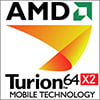
|
AMD Turion 64 MK-36
1C 1T @ 2,00 GHz |
||
|
|
Intel Celeron N2810
2C 2T @ 2,00 GHz |
||
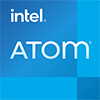
|
Intel Atom Z3735D
4C 4T @ 1,83 GHz |
||

|
Intel Celeron N2920
4C 4T @ 2,00 GHz |
||

|
Intel Atom Z3740
4C 4T @ 1,86 GHz |
||
Geekbench 5, 64bit (Multi-Core)
Geekbench 5 è un benchmark multi-piattaforma che usa in modo intensivo la memoria del sistema.Il test multi-core coinvolge tutti i nuclei elaborativi della CPU e si avvale del hyperthreading.

|
Qualcomm Snapdragon 415
8C 8T @ 1,40 GHz |
||

|
Intel Atom E3827
2C 2T @ 1,75 GHz |
||

|
MediaTek MT6739
4C 4T @ 1,50 GHz |
||
|
|
Intel Celeron N2810
2C 2T @ 2,00 GHz |
||

|
AMD GX-412TC
4C 4T @ 1,00 GHz |
||

|
Intel Celeron 900
1C 1T @ 0,80 GHz |
||

|
Intel Atom N2800
2C 4T @ 1,86 GHz |
||
iGPU - Prestazioni FP32 (GFLOPS a precisione singola)
Le prestazioni di calcolo teoriche dell'unità grafica interna del processore con precisione semplice (32 bit) in GFLOPS. GFLOPS indica quanti miliardi di operazioni in virgola mobile che l'iPPU può eseguire al secondo.

|
Intel Atom Z3745
Intel HD Graphics (Bay Trail GT1) @ 0,78 GHz |
||

|
Intel Atom Z3775
Intel HD Graphics (Bay Trail GT1) @ 0,78 GHz |
||

|
Intel Atom Z3795
Intel HD Graphics (Bay Trail GT1) @ 0,78 GHz |
||
|
|
Intel Celeron N2810
Intel HD Graphics (Bay Trail GT1) @ 0,76 GHz |
||

|
Intel Celeron N2807
Intel HD Graphics (Bay Trail GT1) @ 0,76 GHz |
||

|
Intel Celeron N2910
Intel HD Graphics (Bay Trail GT1) @ 0,76 GHz |
||

|
Intel Celeron N2806
Intel HD Graphics (Bay Trail GT1) @ 0,76 GHz |
||
Risultati stimati da PassMark CPU Mark
Alcune delle CPU elencate di seguito sono stati sottoposti a benchmarking da CPU-monkey. Tuttavia, la maggior parte delle CPU non sono state testate e i risultati sono stati stimati utilizzando una formula segreta di proprietà di CPU-monkey. Come tali, essi non riflettono con precisione i valori attuali di Passmark CPU Mark e non sono stati approvati da PAssMark Software Pty Ltd.

|
AMD E-450
2C 2T @ 1,65 GHz |
||
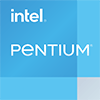
|
Intel Pentium D 915
2C 2T @ 2,80 GHz |
||

|
Intel Celeron 450
1C 1T @ 2,20 GHz |
||
|
|
Intel Celeron N2810
2C 2T @ 2,00 GHz |
||

|
MediaTek MT6739
4C 4T @ 1,50 GHz |
||

|
Intel Atom E3805
2C 2T @ 1,33 GHz |
||

|
AMD E-350
2C 2T @ 1,60 GHz |
||
Cinebench R15 (Single-Core)
Cinebench R15 è il successore di Cinebench 11.5 ed è anch'esso basato su Cinema 4D. Cinema 4D è un software usato a livello mondiale per creare forme in 3D. Il test single-core utilizza solo un nucleo elaborativo della CPU. A tal fine, il numero di nuclei elaborativi o la capacità di hyperthreading non sono rilevanti.

|
Intel Atom x5-Z8350
4C 4T @ 1,92 GHz |
||

|
Intel Celeron J1850
4C 4T @ 2,00 GHz |
||

|
Intel Celeron N2920
4C 4T @ 2,00 GHz |
||
|
|
Intel Celeron N2810
2C 2T @ 2,00 GHz |
||

|
Intel Atom x5-Z8300
4C 4T @ 1,84 GHz |
||

|
Intel Celeron N2806
2C 2T @ 2,00 GHz |
||

|
Intel Celeron N2930
4C 4T @ 2,16 GHz |
||
Cinebench R15 (Multi-Core)
Cinebench R15 è il successore di Cinebench 11.5 ed è anch'esso basato su Cinema 4D. Cinema 4D è un software usato a livello mondiale per creare forme in 3D. Il test multi-core coinvolge tutti i nuclei elaborativi della CPU e si avvale del hyperthreading.

|
Intel Celeron N2815
2C 2T @ 2,13 GHz |
||

|
Intel Celeron N3000
2C 2T @ 2,08 GHz |
||

|
Intel Pentium D 915
2C 2T @ 2,80 GHz |
||
|
|
Intel Celeron N2810
2C 2T @ 2,00 GHz |
||

|
Intel Celeron N2806
2C 2T @ 2,00 GHz |
||

|
Intel Pentium D1509
2C 2T @ 1,50 GHz |
||

|
AMD E1-6010
2C 2T @ 1,35 GHz |
||
Benchmarks

Geekbench 5 (SC)
2.488 inserimenti
2.488 inserimenti

Geekbench 5 (MC)
2.461 inserimenti
2.461 inserimenti

FP32 SP (iGPU)
2.026 inserimenti
2.026 inserimenti
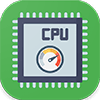
PassMark CPU-Mark
2.391 inserimenti
2.391 inserimenti

Cinebench R15 (SC)
1.106 inserimenti
1.106 inserimenti

Cinebench R15 (MC)
1.101 inserimenti
1.101 inserimenti

Geekbench 3 (SC)
942 inserimenti
942 inserimenti

Geekbench 3 (MC)
938 inserimenti
938 inserimenti

Cinebench R11.5 (SC)
825 inserimenti
825 inserimenti

Cinebench R11.5 (MC)
836 inserimenti
836 inserimenti
Confronti più popolari
Torna all'indice



